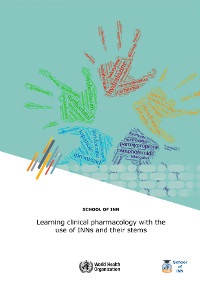Learning clinical pharmacology with the use of INNs and their stems
Learning clinical pharmacology using INN stems
31 December 2017
| Publication

Overview
Any student who studies pharmacology and therapeutics will tell you that
remembering the names of drug substances and their mechanisms of action is one of
the most challenging tasks. Healthcare professionals also find it demanding to keep
up with the names of new therapeutic agents. Knowing how to classify medicines in a
systematic way and assisting healthcare professionals to select the most appropriate
medicines for their patients is of utmost importance in ensuring efficacy and safety.
Names of medicines come in different formats; there are chemical names, generic
names and brand names. They are derived from different approaches and some are
more practical than others in the clinic; but they all are intended to identify the active
pharmaceutical ingredient. Patients, who are not technical experts of medicines, can
find names confusing and may encounter risks, particularly in self-medication. For
example, as the same active pharmaceutical ingredient can appear in different brands
of a medicine, unknowingly the patient may consume the same active ingredient
from different brands thus leading to drug overdose or toxicity. Therefore, protection
of the patient against potential health risks is central to medicine nomenclature.
WHO Team
INN and Classification of Medical Products (INN)
Editors
International Nonproprietary Name (INN) Programme
Number of pages
102
Reference numbers
WHO Reference Number: WHO/EMP/RHT/TSN/2018.2
Copyright
© World Health Organization 2018
